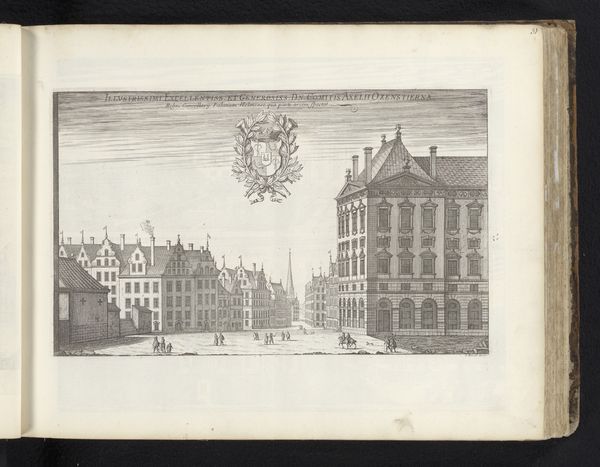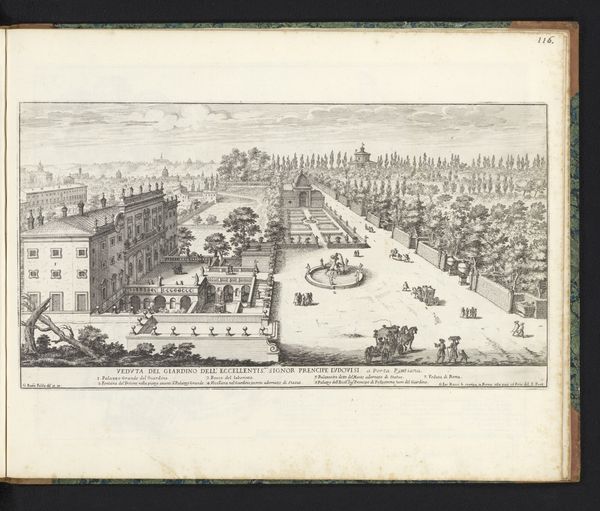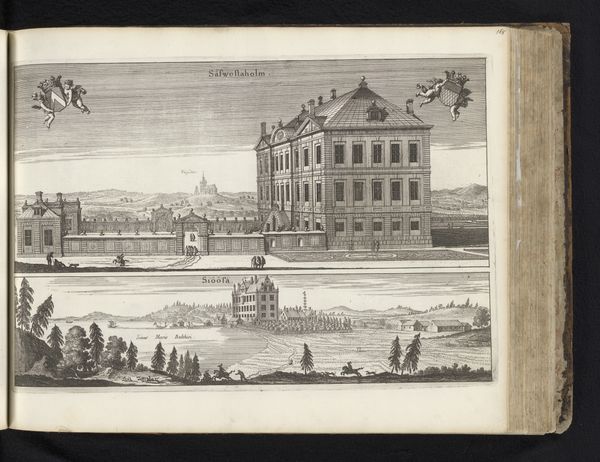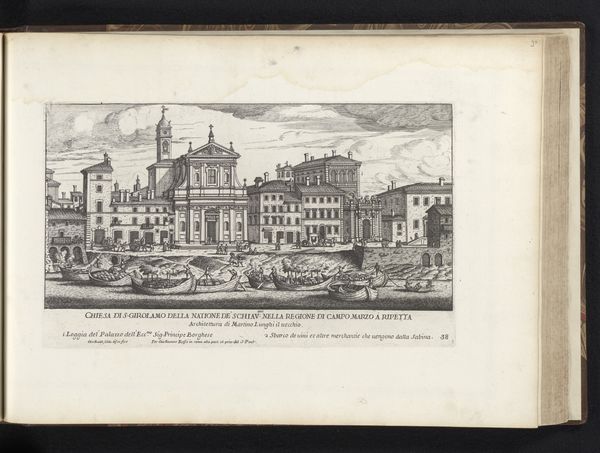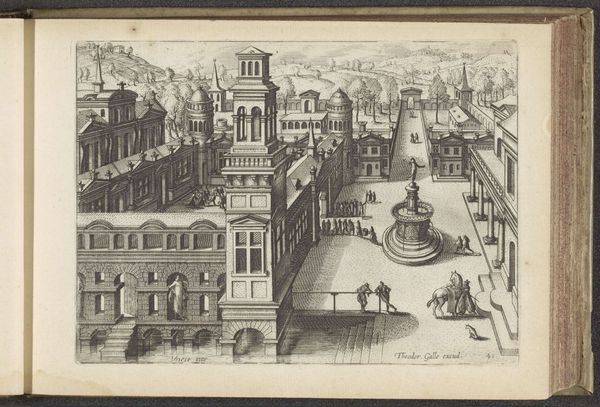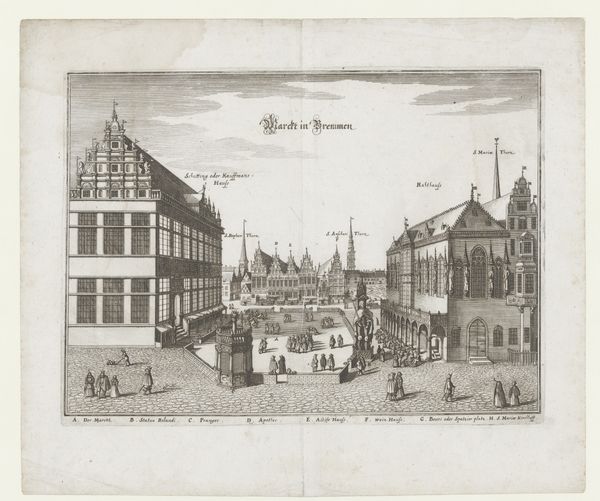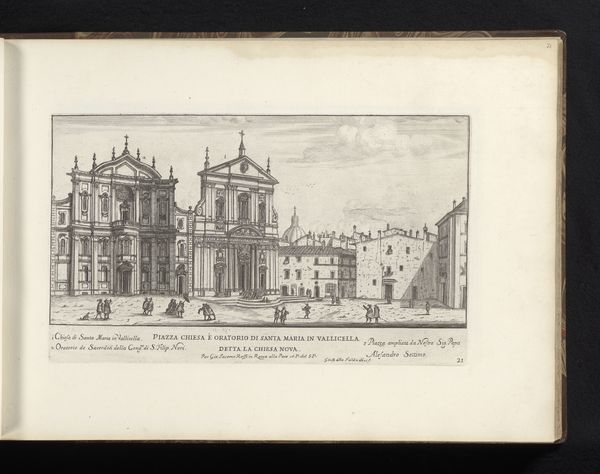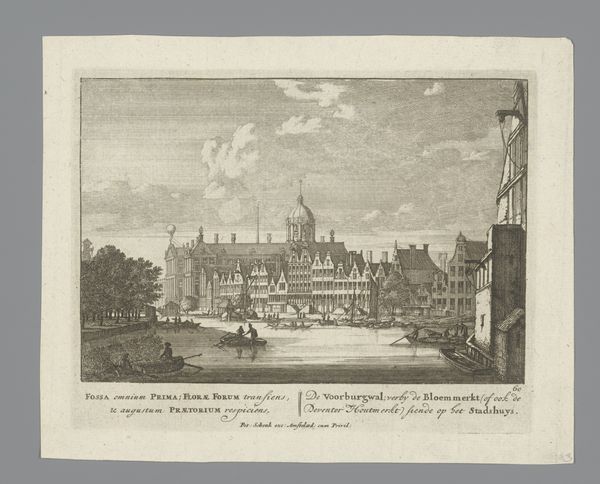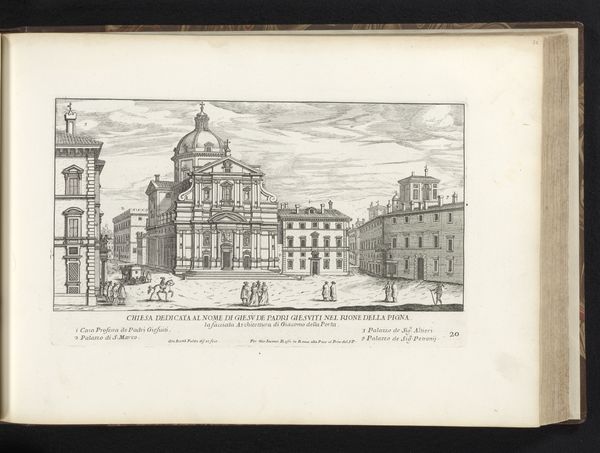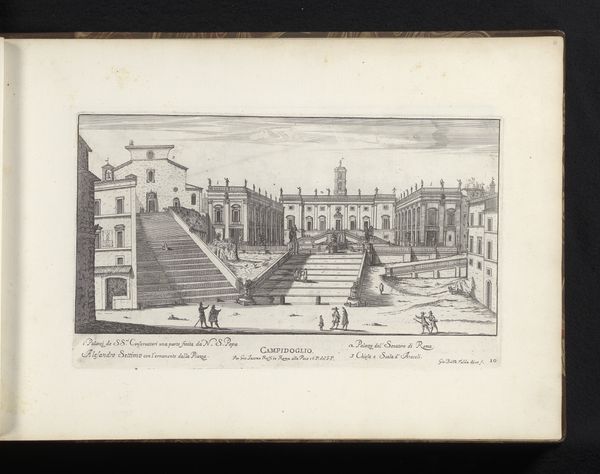
print, etching, engraving, architecture
#
baroque
# print
#
etching
#
cityscape
#
history-painting
#
engraving
#
architecture
Dimensions: height 247 mm, width 379 mm
Copyright: Rijks Museum: Open Domain
This engraving, made by Jean Marot in the 17th century, depicts the Palace of Magnus Gabriel de la Gardie. Above the palace, we see a heraldic crest, a symbol of family lineage and power. Such emblems, prominently displayed, were not mere decorations but potent declarations of status. Consider how similar heraldic symbols have appeared throughout history, from medieval banners to modern corporate logos. They tap into our deep-seated need for belonging and recognition, reflecting the enduring human desire to leave a mark on the world. Think of the eagle, a symbol of power and authority, appearing in Roman standards, Napoleonic emblems, and even contemporary national symbols. Its meaning shifts, but its core association with dominance remains. The crest is more than a marker of identity; it's a psychological anchor, providing a sense of continuity and belonging. Its enduring presence engages viewers on a subconscious level, evoking a sense of admiration or perhaps envy, emotions that have driven human behavior across centuries. This heraldic crest is a testament to how symbols evolve, resurface, and take on new meanings, forever connecting past and present.
Comments
No comments
Be the first to comment and join the conversation on the ultimate creative platform.



